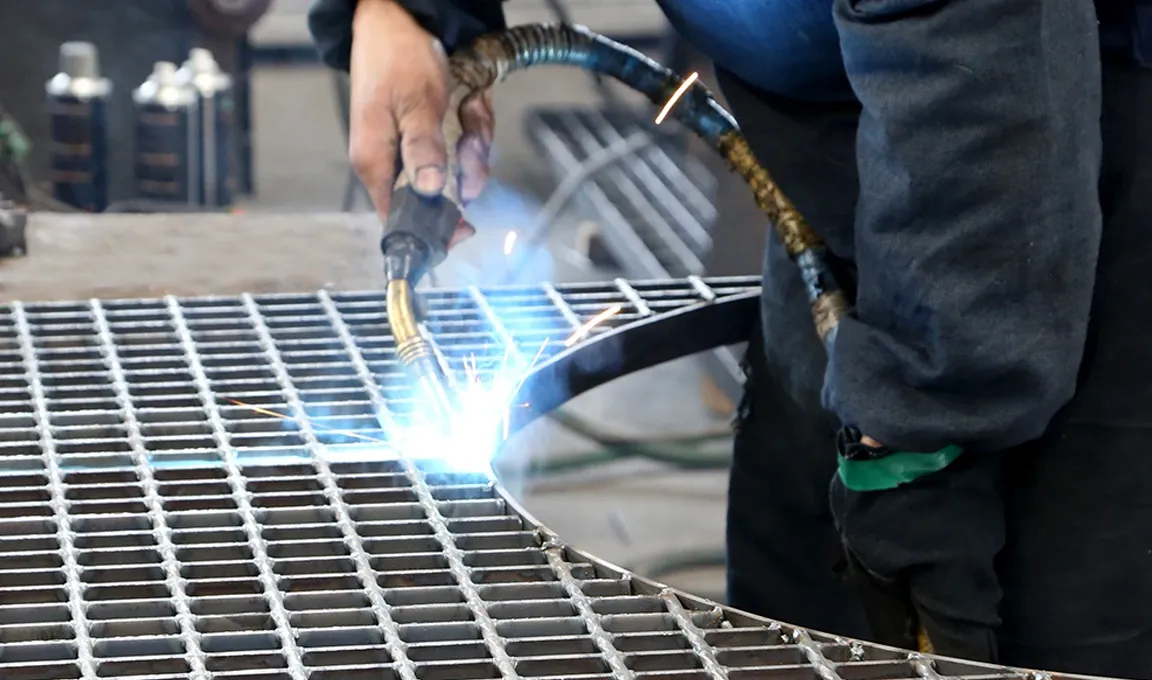Site Safety Fencing A Crucial Element in Construction and Industrial Environments
Site safety fencing plays a vital role in maintaining safety within construction and industrial sites. With the inherent dangers associated with such environments, effective safety measures are imperative to protect workers, visitors, and the general public. This article explores the importance of site safety fencing, its types, and best practices for implementation.
The Importance of Site Safety Fencing
The construction and industrial sectors are fraught with hazards, from heavy machinery and tools to hazardous materials. Site safety fencing serves as a physical barrier that delineates the boundaries of a work area, preventing unauthorized access and minimizing accidents. By clearly marking off dangerous zones, safety fencing protects individuals from potential injuries while also safeguarding valuable equipment and materials from theft or vandalism.
One of the primary responsibilities of construction managers and site supervisors is to ensure the safety of their workers. Implementing site safety fencing is a legal requirement in many jurisdictions, and failure to comply with these regulations can result in hefty fines and legal repercussions. Moreover, a strong safety fencing strategy reflects a commitment to workplace safety, enhancing a company’s reputation and fostering trust among employees and stakeholders.
Types of Site Safety Fencing
1. Temporary Fencing Often utilized in construction sites, temporary fencing is designed to be easily assembled and disassembled. It is typically made from materials such as chain link, mesh, or plastic, providing a straightforward solution for establishing boundaries. Temporary fencing is porous enough to allow visibility but sturdy enough to deter entry.
2. Barricades In certain situations, particularly in areas with high pedestrian traffic, barricades may be used. These are often more robust than standard temporary fencing and can be constructed from wood, metal, or plastic. Barricades are effective in directing foot traffic and preventing entry into hazardous zones.
3. Hoarding Hoarding is a more permanent solution often used in urban construction projects. It involves erecting robust, solid walls around a construction site, which not only provides security but also minimizes noise and dust pollution. Hoarding can also be creatively designed to include advertisements or art, thereby enhancing the aesthetic appeal of the surrounding area.
4. Construction Site Safety Nets While not fencing per se, safety nets installed in conjunction with fencing can catch falling tools or materials, further enhancing worker safety. These nets should be strategically placed at high-rise projects or areas where there is a risk of overhead falls.
site safety fencing

Best Practices for Implementing Site Safety Fencing
To maximize the effectiveness of site safety fencing, several best practices should be followed
1. Conduct a Risk Assessment Before setting up fencing, a thorough risk assessment should be carried out to identify potential hazards. This assessment will guide the placement and type of fencing required for optimal safety.
2. Ensure Visibility Fencing should be highly visible, using bright colors and reflective materials if necessary. Clear signage indicating hazards and access restrictions should accompany the fencing to inform workers and the public of potential dangers.
3. Regular Inspections It is essential to regularly inspect safety fencing for any signs of damage or instability. Prompt repairs should be conducted to maintain integrity and effectiveness.
4. Training and Education Workers should be educated about the purpose of site safety fencing and trained to respect its boundaries. Regular safety meetings can reinforce the importance of compliance with safety measures.
5. Engagement with Local Authorities Consulting local regulations regarding site safety fencing can ensure compliance and promote collaboration with local authorities. This cooperation can lead to additional support and resources for maintaining a safe work environment.
Conclusion
In conclusion, site safety fencing is an indispensable component of construction and industrial safety. Its role in protecting workers, managing public access, and preventing accidents cannot be overstated. By utilizing the appropriate types of fencing and adhering to best practices, companies can create safer work environments, thereby ensuring the wellbeing of their employees and the broader community. Investing in robust site safety fencing not only complies with legal obligations but also reflects a culture of safety that can lead to enhanced productivity and morale among workers.
-
Versatility of Expanded Aluminum Metal for Various Applications
NewsMay.19,2025
-
The Geometry of Steel Gratings: Why It Matters
NewsMay.19,2025
-
Reinforcement Applications of Perforated Mesh in Masonry
NewsMay.19,2025
-
Essential Tools for Installing a Deck Mesh Railing
NewsMay.19,2025
-
Anti-Slip Flooring Made with Stainless Expanded Mesh
NewsMay.19,2025
-
Adjustable Steel Grating for Uneven Terrain
NewsMay.19,2025
Subscribe now!
Stay up to date with the latest on Fry Steeland industry news.

